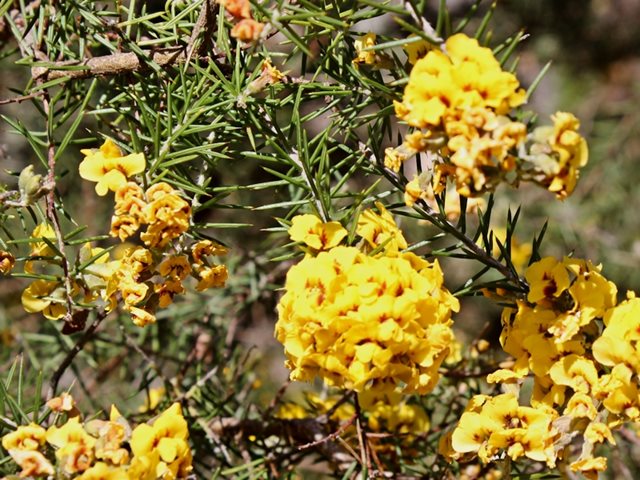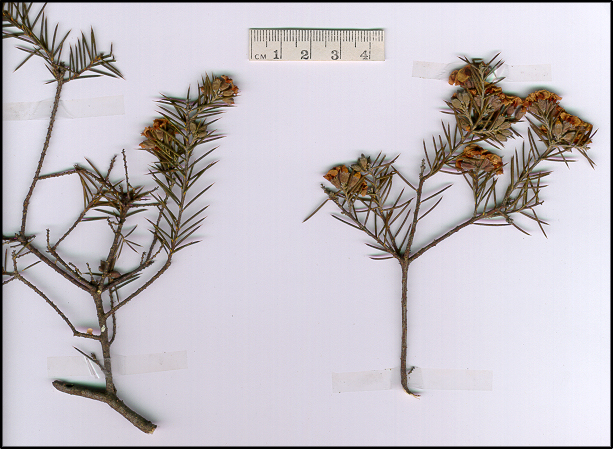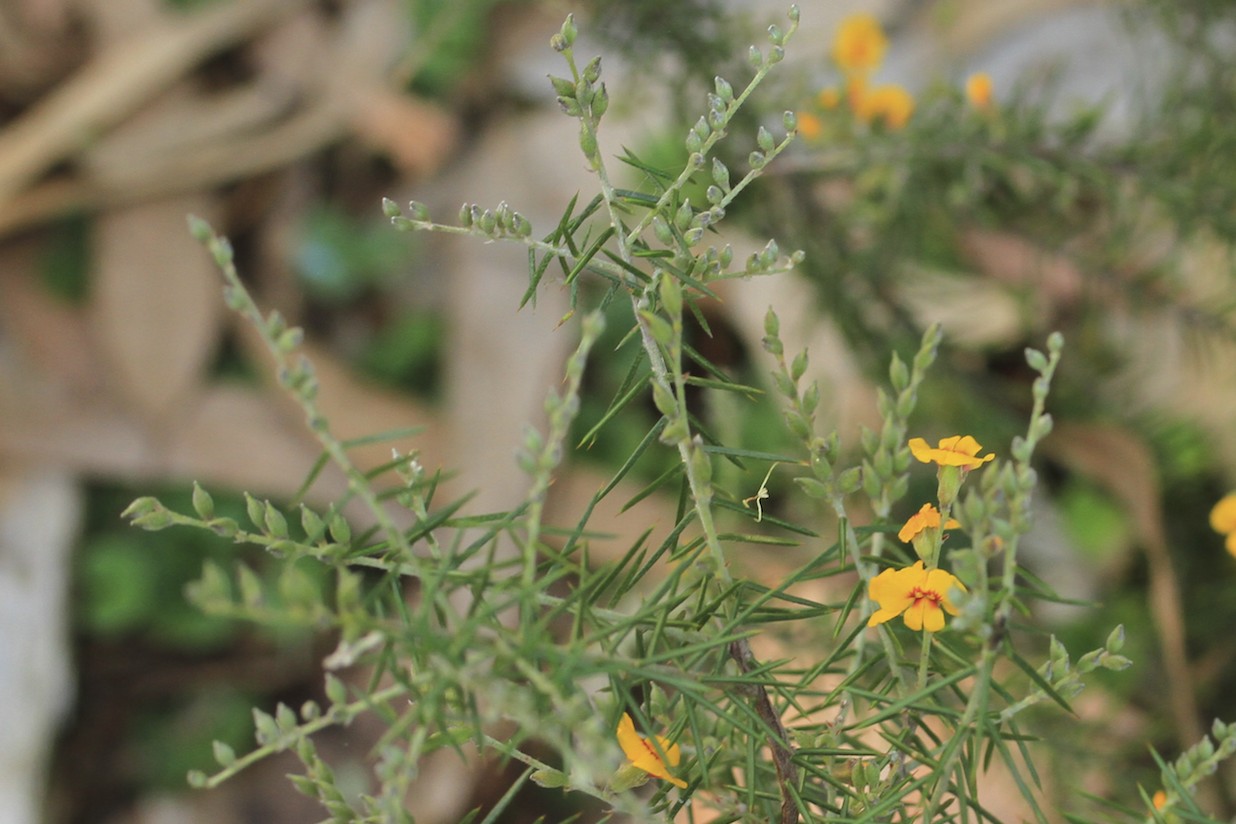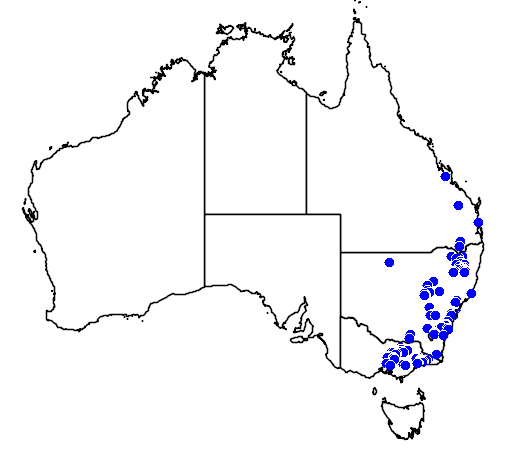Description
Common names
Prickly Parrot-pea, Juniper Pea-bush, Juniper Pea Bush, Juniper-leaved Dillwynia, Prickly Parrot Pea.
Scientific names
Dillwynia juniperina.
Family
Fabaceae.
Genus
Dillwynia.
Name origin
Dillwynia, after British botanist Lewis Weston Dillwyn (1778-1855). Juniperina, juniper-like, after a prickly European conifer.
Rainfall
400mm+.
Growth rate
Moderate.
Growth height
1-2m.
Presence in Australia
Rare in the region. Noted west of the Hume Highway in the areas Yambla; The Rock-Henty-Milbrulong; Yerong Creek-Wattle Creek, and Burkes and Graveyard.
This specie has been identified in the following Australian states: Qld, NSW, ACT, Vic.
Habitat
Dry sclerophyll forest on various soils.
Habit
Erect prickly shrub 1-2m high. Rigid narrow leaves 7-15 mm long.
Similar species
Dillwynia sieberi was previously included in Dillwynia juniperina.
Site preference
Well-drained soils in dappled shade or partial sun.
Characteristics
Very adaptable.
Flowering
Golden yellow with red.
Seed collection
Late Oct to late Feb. Monitor closely as seeds released immediately or within 1-2 days of maturity. Seeds have long storage life.
Propagation
From scarified seed or cuttings. Soak in near-boiling water for about 30 seconds, before cooling rapidly under flowing cold water. Alternatively soak in cold water for several hours. Dry to prevent rotting before sowing. Germination takes 3-4 weeks. Suitable for direct seeding in pots (2-3 seeds per pot).
Regeneration
From seed and suckers after fire, forming dense groundcover. Does not establish as readily as most wattles when direct seeded.
Shade and shelter
Low cover in windbreaks.
Land protection
Legume - improves soil fertility through "fixing" nitrogen.
Wildlife
Good habitat.
Ornamental
Decorative. Useful as barrier.




